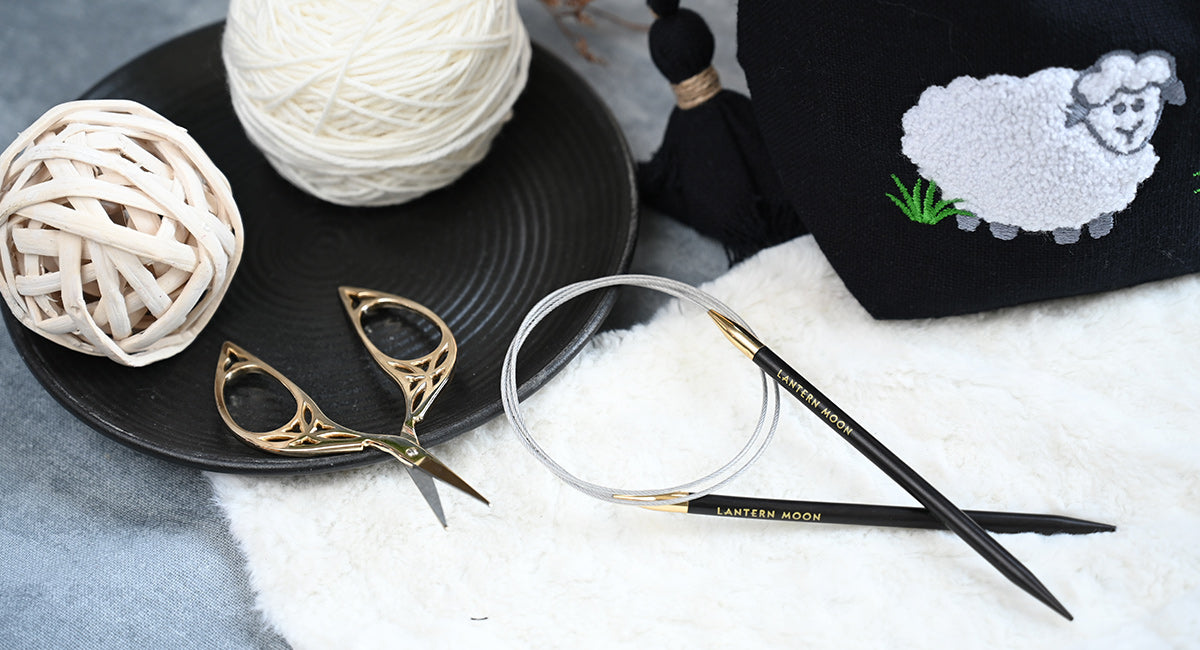
Have you fallen in love with lace knitting? The beauty of lace knitting patterns is for all knitters, beginners or advanced makers. The beautiful pattern can be knit with any knitting needles. Well for beginner projects, you can start with lace scarfs and shawls and then move on to sweaters, cardigans, t-shirts and garments. This is when you need knitting decreases to ensure shapely garments that fit well.
Knitting increases and decreases bring the design out in lace knitting patterns. But decreases are also used to work the shape and fit for the bodice, armholes, sleeves and necklines without compromising on the lace pattern. Now if you’ve been a knitting pro you must have mastered many knitting decrease techniques but for lace only some of them will come in use. To help you master knitting decreases in lace patterns in this blog, we'll explore various techniques and their impact on your projects.
Why are Decreases Important in Lace Patterns?
Lace knitting is a delicate and intricate craft that requires precision and attention to detail. While increases are often celebrated for their ability to create airy and open fabrics, decreases are equally important for shaping and defining the lace pattern. Explore the beginners guide to basic lace knitting and explore the role of increase and decrease techniques. For the shaping factor, knitting decreases in lace patterns need to be carefully chosen so that you can work on the shape without compromising on the design.
Whether you are working with a pair of single-pointed needles or circulars for a shawl back and forth, you can choose decreases to work out asymmetrical designs such as triangular shawls. Or if you are working on a lace sweater or cardigans with circular knitting needles or DPNs you can work on the shape and fit of armholes, bust and
Understanding Decreases in Lace
Generally, for lace patterns, each decrease must be paired with a yarnover in order to maintain a consistent stitch count. Before we dive into specific techniques, it's essential to grasp the concept of decreases in lace knitting. Unlike decreases in other knitting projects, lace decreases aim to reduce the stitch count while maintaining the delicate structure of the fabric. This often involves carefully considering the placement of decreases to maintain the pattern's integrity.
How to Work Decreases in Lace Patterns
First, try and work decrease in the row or round of stockinette rather than a row or round that already has increase and decrease stitches to make holes in the knitted fabric. Basically, lace involves aesthetic holes in the middle of the knitted fabric (sections of stockinette and garter) to balance out lace.
Second, try to place decrease far from lace decrease When incorporating decreases into a lace pattern, it's crucial to maintain the pattern's rhythm and balance. This involves carefully considering the placement of decreases and ensuring they don't disrupt the lace structure.
Types of Decreases in Lace Knitting

Several decrease techniques are commonly used in lace knitting. Each method produces a slightly different stitch structure and visual effect.
Right-leaning Decreases
Knit Two Together (K2tog): This is the most basic decrease, resulting in a right-leaning slant. To perform a K2tog, knit the next two stitches together as one. Refer to our guide on knit two together (k2tog) or explore purl two together (p2tog)
Right-leaning Decrease (RLD): This decrease is similar to K2tog but creates a slightly tighter decrease. Knit the first stitch, slip the next stitch with yarn in front, knit the slipped stitch, then pass the slipped stitch over the knitted stitch.
Left-leaning Decreases
Ssk (Slip, Slip, Knit): This technique creates a left-leaning decrease. Slip the next two stitches purlwise with yarn in front, knit the two slipped stitches together.
Left-leaning Decrease (LLD): Similar to ssk but creates a slightly tighter decrease. Slip the next stitch purlwise with yarn in front, knit the next stitch, slip the first slipped stitch over the knitted stitch.
Symmetrical Decreases
Decrease Two Together (dec2tog): This decrease is often used in patterns that require a symmetrical decrease. Knit the next two stitches together through the back loops.
How to Choose the Correct Lace Knitting Decrease Technique
The choice of decrease depends on several factors:
Pattern Design: The desired shape and appearance of the decrease will influence your choice. Say for example if you are working on a lace knit shawl
Stitch Count: Some decreases work better with specific stitch counts.
Yarn Weight: Thicker yarns might require slightly different techniques.
Personal Preference: Ultimately, the decrease that you find easiest and most effective is the best choice.
Mastering decreases is a crucial skill for any lace knitter. By understanding the different techniques and their impact on the fabric, you can create stunning and intricate lace projects. Experimentation and practice are key to developing your skills and finding the perfect decreases for your designs.
So, are you ready to get started with lace-knit sweaters and garments? Well, first get your supplies. With smooth ebony wood knitting needles from the Lantern Moon collection, you can enjoy lace knitting patterns effortlessly. The premium wood has a luxury silk finish that ensures a smooth flow of stitches working with any yarn. The knitting needle collection offers a wide range of sizes and types according to your project requirement plus knitting needle sets offer multiple needle combinations along with accessories for all kinds of knitting projects. Want to know more about knitting lace with Lantern Moon, explore our guide on getting started with the art of knitting lacework with wooden knitting needles.
